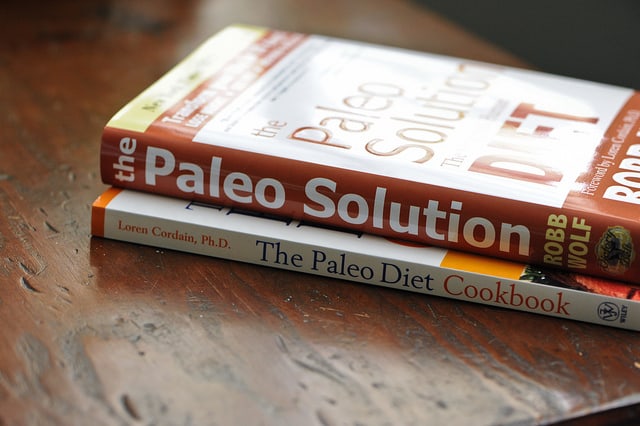Odds are, you’ve heard about the paleo diet, also known as the “caveman diet.”
However, this nickname isn’t exactly accurate; the paleo approach is not about replicating the caveman way of life. We actually do not know exactly what was eaten back then.
Rather, going paleo is about looking at evolutionary biology and figuring out what is the most nutrient dense food we can eat to nourish our body, prevent disease by reducing inflammation, and lead a healthy life.
This means making choices to not consume highly processed food or food high in anti-nutrients. It also means buying local, seasonal, and sustainable foods.
There are a lot of misconceptions about the paleo diet. But here are the five straight facts.
Facts You Need To Know About The Paleo Diet
1. The paleo diet isn’t the same for everybody
I refer to the diet as a ‘paleo template’ because it is not a ‘one size fits all’ approach. It’s about taking the basic paleo food choices, then building on these to suit yourself and your individual health needs. It’s about what is right for you.
Related: How To Eat Paleo Like A Caveman
2. The biggest benefit from the paleo diet isn’t what you’d think
Foods eaten on the basic paleo diet include pasture-raised meats, wild caught seafood, season vegetables, and fruit, plus small amounts of some nuts and seeds. But this isn’t necessarily about calories.
One of the main benefits I see from going paleo is the reduction of inflammation in the body.
This is achieved through dietary choices, which are low-inflammatory, and through the ‘lifestyle’ approach to paleo, which includes getting adequate sleep, reducing stress, getting out in nature, and exercising. This ‘whole health’ approach does so well because it works to balances hormones and reduce inflammation.
Related: 10 Healthy Eating Habits You Should Adopt Today
3. Grains and legumes are as bad as they say
The issue many people have with the paleo diet is with cutting out grains and legumes. They wonder what’s so bad about them, really.
Really, the appropriate question is this: what is good about them?
Grains and legumes contain anti-nutrients, which are natural toxins and gut-irritating proteins. They are the plants natural defense system.
Related: 4 Reasons To Eat More Plant-Based Foods
Plants naturally want to continue their life cycle — to be able to grow and reproduces so as to ensure the survival of their species. In order to be able to do this, they have some defence mechanisms in place to ward off the predators that eat them (yes, that includes us).
Essentially, these mechanisms are geared towards either the survival of the reproductive part of the plant passing through the digestive tract intact so that it can germinate and grow again, or causing so much intestinal distress from eating the plant that the animal won’t want to eat that plant or seed again.
Signs and symptoms of intestinal distress can include bloating, gas, and general gastrointestinal upset, but many symptoms such as inflammation may go unrecognised for a period of time.
Chronic gut irritation can lead to increased permeability (leaky gut) and reduced absorption and assimilation of other nutrients.
Related: Is Wheat Bad For You? 7 Alarming Reasons Why
Grains and legumes are also responsible for a high percentage of food allergies; some of them are up there in the top five allergens. There are many more nutrient-dense food options that you can eat (hello, paleo!), that do not have these associated potential adverse health effects.
4. Another danger: lectins
Lectins are found in nearly all plants, but are most notably in grains, legumes, nuts, dairy and nightshade plants (eggplant, tomatoes, potatoes).
Lectins bind to surface proteins in the digestive tract. This can impair the function of the gut wall leading to increased leaky gut, reduced enzyme activity, reduced nutrient digestion and absorption, gut bacteria imbalances, and impaired immune functioning.
Related: Boost Your Immune System With These 4 Foods
5. …and yet another danger: phytates and phytic acid
Phytates are found in grains, legumes, nuts, and seeds, and they bind with the minerals in these foods, forming indigestible compounds.
This means the calcium, iron, zinc and magnesium found in these foods cannot be absorbed efficiently by your body. Zinc and magnesium deficiency are two of the most common mineral deficiencies that many practitioners see. Depletion of our soil and the high consumption of grains could potentially be driving these deficiencies.
Related: Quinoa Nutrition Facts: 7 Reasons To Eat This Ancient Superfood
The Takeaway
Paleo is not ‘one size fits all,’ and I would always recommend eliminating these potentially problematic foods for a period of 28 days, then possibly reinstating them in your diet, and see how your body tolerates them. It is about seeing what works best for you. Going paleo is an amazing way to treat your body well…just look at the facts!
********************
 Claire Yates is a Nutritional Medicine Practitioner and the author of Optimum Health The Paleo Way, holding a Bachelor of Health Science, who is passionate about paleo nutrition, health and having fun! A self-confessed lover of good food and good coffee, Claire believes that living your best life and eating healthy food should not be boring. Through sharing her knowledge and ‘walking the walk’, Claire inspires people to enjoy nutritious, delectable food and live a fulfilling, healthy life. A former lecturer in nutritional medicine, Claire currently runs her own private practice, Indi Nature.
Claire Yates is a Nutritional Medicine Practitioner and the author of Optimum Health The Paleo Way, holding a Bachelor of Health Science, who is passionate about paleo nutrition, health and having fun! A self-confessed lover of good food and good coffee, Claire believes that living your best life and eating healthy food should not be boring. Through sharing her knowledge and ‘walking the walk’, Claire inspires people to enjoy nutritious, delectable food and live a fulfilling, healthy life. A former lecturer in nutritional medicine, Claire currently runs her own private practice, Indi Nature.
Featured image by devere17

